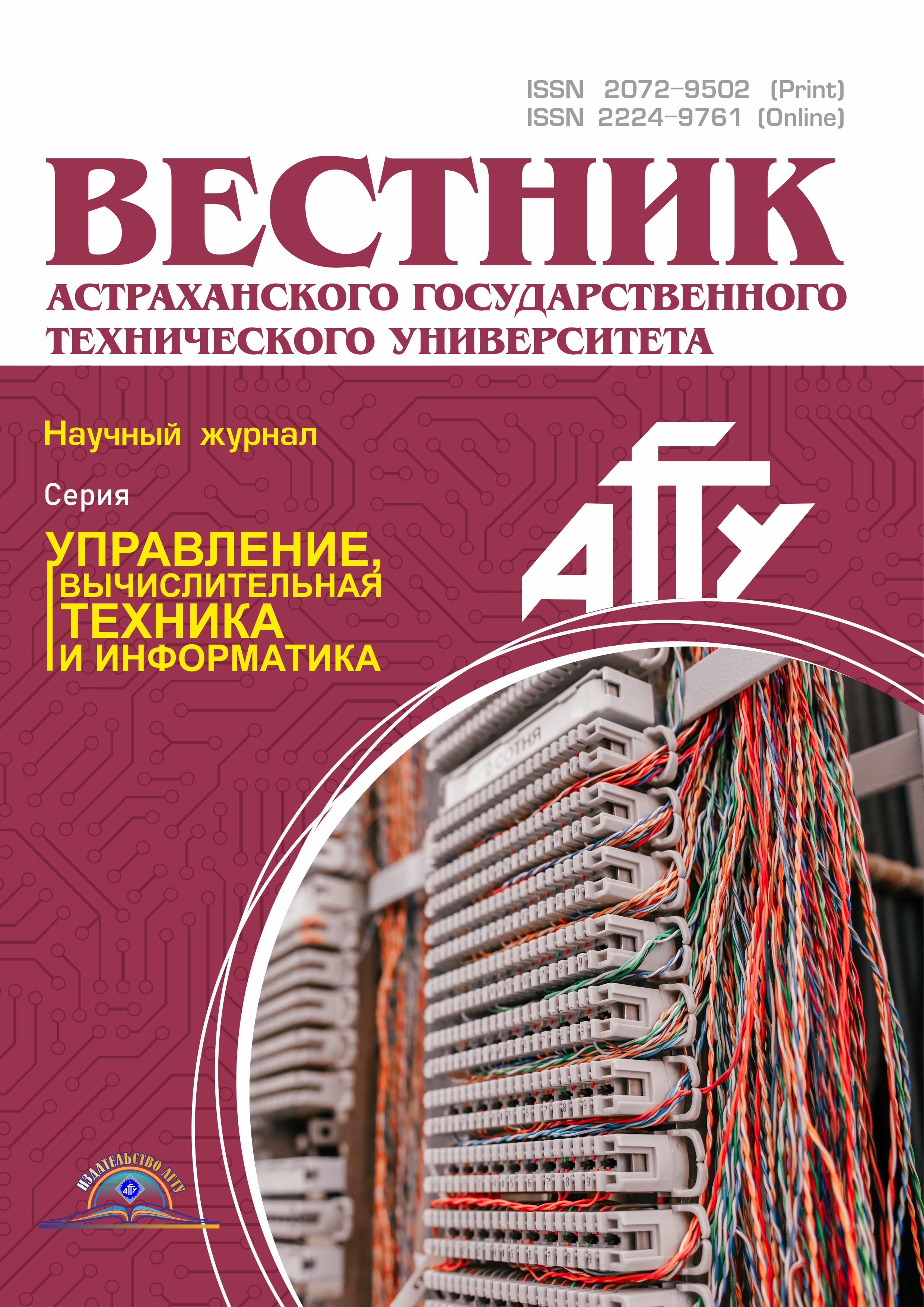VAK Russia 05.13.01
VAK Russia 05.13.06
VAK Russia 05.13.10
VAK Russia 05.13.18
VAK Russia 05.13.19
UDC 004.932
CSCSTI 20.01
CSCSTI 28.01
CSCSTI 49.01
CSCSTI 50.01
CSCSTI 82.01
The subject of research is improvement and evaluating of the quality of digital processing of the image for the purpose of removing undesired defects (artifacts) in the form of strobe effects. The article presents new evaluating techniques for strobe effects on images based on defining image boundaries by Canny and Prewitt methods. There have been examined the possibilities of estimating the strobe effects on raster images represented by RGB color model. Evaluation of strobe effects is carried out by comparing the contours selected by Canny and Prewitt methods for individual color components (red, green, blue) and gray scale images. On the selected contours there are determined their minimum and maximum coordinates, by which the boundaries of the contours are differentiated. As shown by experiments, this approach can serve as a numerical metric for strobe effects on raster images. Another proposed approach in assessing strobe effects is to compare the area of circles obtained from previous calculations. The ratio of the smaller area to the larger one can serve as a numerical metric for estimating strobe effects on raster images. The proposed metrics are supplied with numerical calculations and graphic illustrations.
RGB color model, Canny, Prewitt, contour boundaries, metric, strobe effects, artifacts, raster images, two-dimensional image matrices
1. Starovoitov V. V., Starovoitov F. V. Sravnitel'nyi analiz bezetalonnykh mer otsenki kachestva tsifrovykh izobrazhenii [Comparative analysis of artifact-free measures of evaluating quality of digital images]. Sistemnyi analiz i prikladnaia informatika, 2017, no. 1 (13), pp. 24-32.
2. Gu K., Zhou J., Zhai G., Lin W., Bovik A. C. No-reference quality assessment of screen content pictures. IEEE Transactions on Image Processing, 2017, vol. 26, no. 8, pp. 4005-4017.
3. Zhang Lin, Zhang Lei, Bovik A. C. A feature-enriched completely blind local image quality analyzer. IEEE Transactions on Image Processing, 2015, vol. 24, no. 8, pp. 2579-2591.
4. Xue W., Zhang L., Mou X., Bovik A. C. Gradient magnitude similarity deviation: A highly efficient perceptual image quality index. IEEE Transactions on Image Processing, 2014, vol. 23, no. 2, pp. 684-695.
5. Al'-Askari M. A., Fedosin S. A., Afonin V. V. Analiz kachestva rastrovykh izobrazhenii [Analysis of quality of raster images]. Nauchno-tekhnicheskii vestnik Povolzh'ia, 2018, no. 1, pp. 107-109.
6. Al'-Askari M. A., Fedosin S. A., Afonin V. V. Veroiatnostnaia otsenka kachestva rastrovykh izobrazhenii [Probabilistic assessment of quality of raster images]. Nauchno-tekhnicheskii vestnik Povolzh'ia, 2018, no. 4, pp. 62-65.
7. Al-Askari M. A. The definition of blocking artifacts in raster images. Aktual'nye problemy i dostizheniia v estestvennykh i matematicheskikh naukakh: sbornik nauchnykh trudov po itogam Mezhdunarodnoi nauchno-prakticheskoi konferentsii № 5. Samara, NN: ITsRON Publ., 2018. Pp. 49-53.
8. Al-Askari M. A. The definition of artifacts of the type of blocking on raster images. Informatsionnye tekhnologii. Problemy i resheniia. Ufa, Izd-vo UGNTU, 2018. Vol. 1 (5). Pp. 83-87.
9. Egiazarian K., Astola J., Ponomarenko N., Lukin V., Battisti F., Carli M. New full-reference quality metrics based on HVS. Proceedings of the Second International Workshop on Video Processing and Quality Metrics. USA, Scottsdale, 2006. 4 p.
10. Dronnikova S. A., Gurov I. P. Uluchshenie kachestva izobrazhenii pri obrabotke videokadrov s razlichnym vremenem ekspozitsii [Improvement of image quality during video frame processing with different time of exposure]. Nauchno-tekhnicheskii vestnik informatsionnykh tekhnologii, mekhaniki i optiki, 2017, vol. 17, no. 3, pp. 424-430. DOI:https://doi.org/10.17586/2226-1494-2017-17-3-424-430.
11. Ponomarev S. V. Issledovanie metodov detektirovaniia granits poverkhnostei v zadache sovmeshcheniia izobrazhenii trekhmernykh stsen [Study of methods of detecting surface boundaries in the problem of overlapping images of 3D scenes]. Nauchno-tekhnicheskii vestnik informatsionnykh tekhnologii, mekhaniki i optiki, 2017, vol. 17, no. 4, pp. 694-701. DOI:https://doi.org/10.17586/2226-1494-2017-17-4-694-701.
12. Varlamova A. A., Kuznetsov A. V. Obnaruzhenie vstraivanii na izobrazheniiakh putem analiza artefaktov, obuslovlennykh parametrami sensora registriruiushchego ustroistva [Detecting imbeddings on images by analyzing artifacts stipulated by parameters of sensor of recording unit]. Komp'iuternaia optika, 2017, vol. 41, no. 6, pp. 920-930.
13. Gonsales R., Vuds R., Eddins S. Tsifrovaia obrabotka izobrazhenii v srede MATLAB [Digital processing of images in MATLAB environment]. Moscow, Tekhnosfera Publ., 2006. 616 p.
14. Gonsales R., Vuds R. Tsifrovaia obrabotka izobrazhenii [Digital processing of images]. Moscow, Tekhnosfera Publ., 2012. 1104 p.
15. Umaa Mageswari S., Sridevi M., Mala C. An experimental study and analysis of different image segmentation techniques. International Conference on Design and Manufacturing (IConDM2013) (Chennai, India, 18-20 July 2013). Procedia Engineering, vol. 64, part 1, pp. 46-55.















